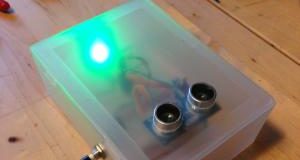[ad_1]
From prohibition-era moonshiners to the 2000s MTV classic Pimp My Ride, people have repairing, upgrading, and modifying their cars for a long time. More recently, low-cost microcontrollers like the Arduino have opened new doors for makers looking to do fun and interesting things with their vehicles. In this article, we’ll look at a few car-related projects that make use of the popular open hardware microcontroller.
If you choose to try one of these out, be sure to consult with a qualified professional and your local regulations before making any modifications that could affect the safety of your vehicle.
Speed display for your windshield
This project by Bill Wong allows you to view your current speed without looking away from the road or refocusing your eyes. Wong connected an Arduino Uno to his car’s OBD-II port and programmed it to display his current speed on a seven-segment display. From there, the speed is projected through a Fresnel lens and onto a small piece of windshield-mounted teleprompter glass.
Since the initial build, Wong has tried out two variations of his HUD project that experiment with different display locations and screen materials. Be sure to check those out below.
Instructions | 1.1 | 2.0
Turn signals upgrade
DIY projects often lack the polish of professionally made solutions, but that wasn’t the case for Shravan Lal’s LED turn signal upgrade. Using an Arduino Nano, Lal programmed a low-cost strip of LEDs to animate when turn signals and caution lights are engaged. The result, as you can see below, looks pretty sweet. Lal was even thoughtful enough to make sure his project was in compliance with local traffic laws.
Remote start using a laptop or smartphone
Remote start has been around for a while, but did you know you can use an Arduino to add the feature to older vehicles? This elaborate project from Instructables user ChrisJohnson55 lets him start his Subaru Forester via Bluetooth. He had some issues getting the project to work with his Android phone, but as demonstrated in the video below, it works well with his laptop.
A quick word of warning: Tinkering with your vehicle’s ignition system can be dangerous if not done properly. Proceed with caution!
Parking assistance
If you’ve ever had to park your car in a small garage or cramped space, you probably understand the frustration of not knowing how much room to leave behind and in front of your car. Instructables user rclymer set out to solve that problem with an Arduino, some LEDs, and a low-cost distance sensor.
As you pull your car closer to the sensor, the Arduino-based project displays green, yellow, and red lights to let you know when it’s time to stop. Best of all, you can easily modify the project’s code to set different target distances. A self-proclaimed environmentalist, Rclymer even programmed a power-save mode to save electricity. Not bad at all!

Photo by Rclymer. CC BY-NC-SA 2.5.
Colored interior lighting with Bluetooth-controlled LEDs
One of the coolest car-based projects you can do is also one of the simplest. Using a few low-cost LED lights and an Arduino, this project from Ardumotive.com lets you control the color of your interior lighting via Bluetooth using a free Android app. Coolest of all, this project will automatically fade the lights in and out when doors open and close.
Bonus: Check out this full-blown smart car system
While it’s not a project you can easily try yourself, I couldn’t go without mentioning this incredible smart car system designed and developed by computer science engineer Michalis Vasilakis. This part voice-command, part virtual assistant project boasts a park assist system, voice control for lights and turn signals, and more. For a full run-through of all the features, check out the video below. (It’s in Greek, but has English subtitles.)
[ad_2]
Source link
